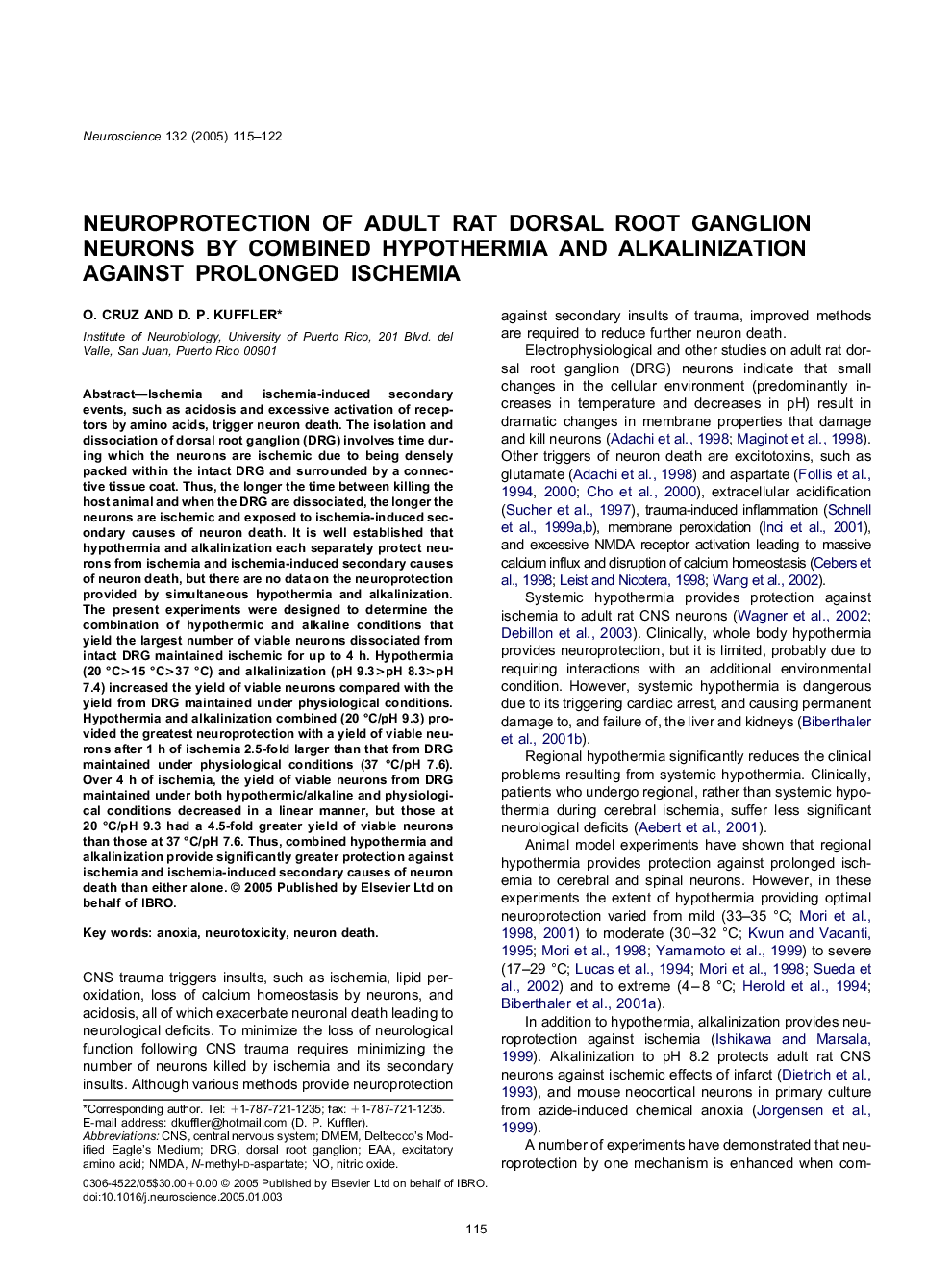| کد مقاله | کد نشریه | سال انتشار | مقاله انگلیسی | نسخه تمام متن |
|---|---|---|---|---|
| 9425953 | 1295900 | 2005 | 8 صفحه PDF | دانلود رایگان |
عنوان انگلیسی مقاله ISI
Neuroprotection of adult rat dorsal root ganglion neurons by combined hypothermia and alkalinization against prolonged ischemia
دانلود مقاله + سفارش ترجمه
دانلود مقاله ISI انگلیسی
رایگان برای ایرانیان
کلمات کلیدی
موضوعات مرتبط
علوم زیستی و بیوفناوری
علم عصب شناسی
علوم اعصاب (عمومی)
پیش نمایش صفحه اول مقاله

چکیده انگلیسی
Ischemia and ischemia-induced secondary events, such as acidosis and excessive activation of receptors by amino acids, trigger neuron death. The isolation and dissociation of dorsal root ganglion (DRG) involves time during which the neurons are ischemic due to being densely packed within the intact DRG and surrounded by a connective tissue coat. Thus, the longer the time between killing the host animal and when the DRG are dissociated, the longer the neurons are ischemic and exposed to ischemia-induced secondary causes of neuron death. It is well established that hypothermia and alkalinization each separately protect neurons from ischemia and ischemia-induced secondary causes of neuron death, but there are no data on the neuroprotection provided by simultaneous hypothermia and alkalinization. The present experiments were designed to determine the combination of hypothermic and alkaline conditions that yield the largest number of viable neurons dissociated from intact DRG maintained ischemic for up to 4 h. Hypothermia (20 °C>15 °C>37 °C) and alkalinization (pH 9.3>pH 8.3>pH 7.4) increased the yield of viable neurons compared with the yield from DRG maintained under physiological conditions. Hypothermia and alkalinization combined (20 °C/pH 9.3) provided the greatest neuroprotection with a yield of viable neurons after 1 h of ischemia 2.5-fold larger than that from DRG maintained under physiological conditions (37 °C/pH 7.6). Over 4 h of ischemia, the yield of viable neurons from DRG maintained under both hypothermic/alkaline and physiological conditions decreased in a linear manner, but those at 20 °C/pH 9.3 had a 4.5-fold greater yield of viable neurons than those at 37 °C/pH 7.6. Thus, combined hypothermia and alkalinization provide significantly greater protection against ischemia and ischemia-induced secondary causes of neuron death than either alone.
ناشر
Database: Elsevier - ScienceDirect (ساینس دایرکت)
Journal: Neuroscience - Volume 132, Issue 1, 2005, Pages 115-122
Journal: Neuroscience - Volume 132, Issue 1, 2005, Pages 115-122
نویسندگان
O. Cruz, D.P. Kuffler,